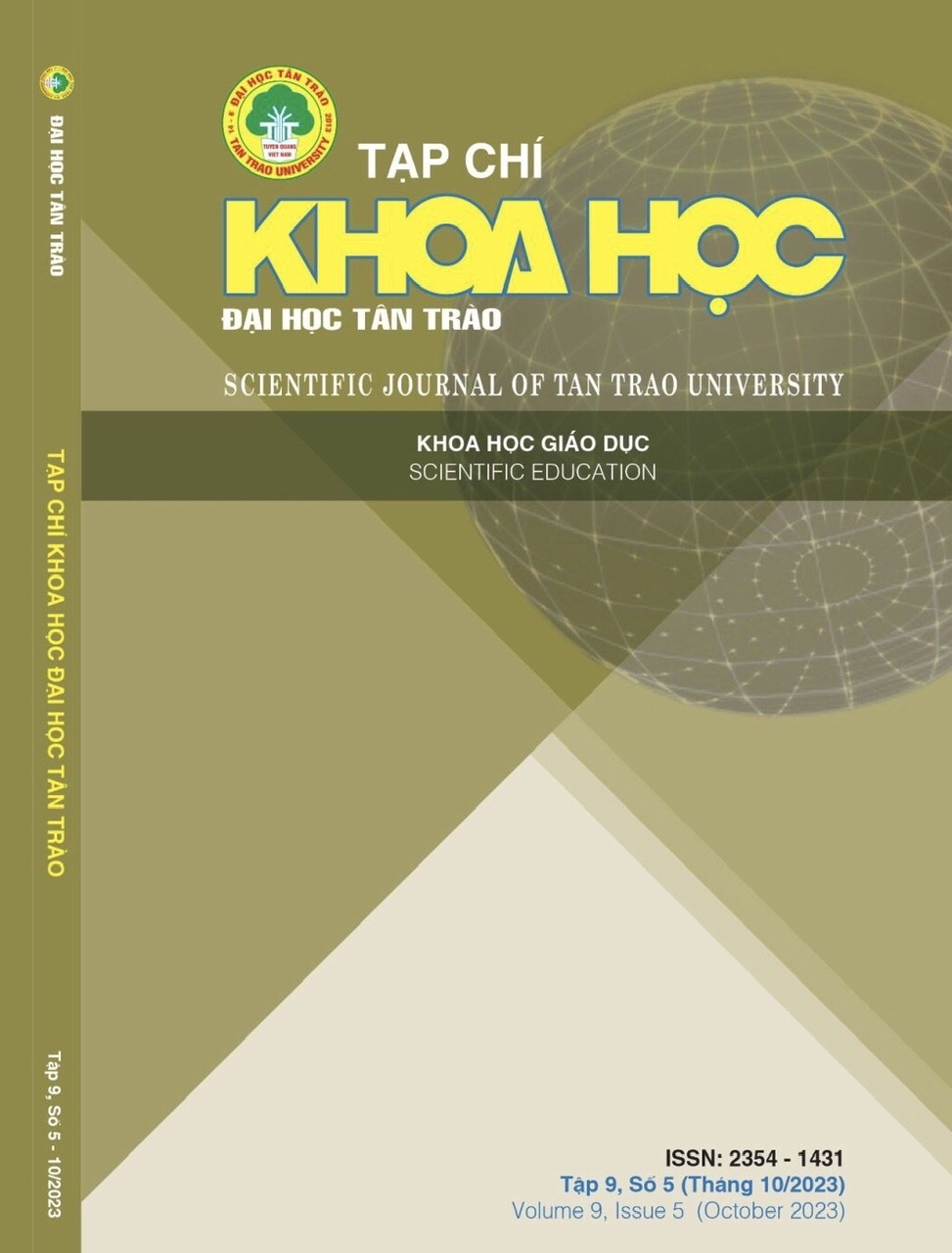APPLYING THE PROBLEM-BASED LEARNING METHOD IN TEACHING PROBABILITY THEORY AND STATISTICS FOR STUDENTS AT UNIVERSITY OF FINANCE - MARKETING
DOI:
https://doi.org/10.51453/2354-1431/2023/1035Abstract
Probability theory and statistics are essential subjects for students majoring in Economics. However, many students face challenges in grasping this subject due to its abstract nature. This paper discusses the application of teaching methods aimed at enhancing the effectiveness of teaching and learning Probability theory and statistics. This approach helps students cultivate critical thinking, apply knowledge to practical scenarios, and improve problem-solving skills.
Downloads
References
[1] Garfield, J. & Ben-Zvi, D. (2008). Developing students’ statistical reasoning: Connecting research and teaching practice. Springer Science & Business Media. ISBN: 978-1-4020-8382-2
[2] Hmelo-Silver, C. E. (2004). Problem-based learning: What and how do students learn? Educational Psychology Review, 16(3), 235-266.
https://doi.org/10.1023/B:EDPR.0000034022.16470.f3
[3] Barrows, H. S. (1996). Problem-based learning in medicine and beyond. In L. Wilkerson & W. Gijselaers (Eds.), Bringing problem-based learning to higher education: Theory and practice (pp. 3-13). San Francisco, CA: Jossey-Bass.
https://doi.org/10.1002/tl.37219966804
[4] Strobel, J., & Van Barneveld, A. (2009). When is PBL more effective? A meta-synthesis of meta-analyses comparing PBL to conventional classrooms. Interdisciplinary Journal of Problem-Based Learning, 3(1), 4.
DOI:10.7771/1541-5015.1046
[5] Jacobs, A. E. (2007). An in-depth investigation of the purposes and utilization of problem-based learning within academic programs for occupations therapists and physical therapists in Victoria, Australia and Ontario, Canada (Doctoral dissertation, Drexel University).
DOI:10.1007/978-0-387-71164-5_4
[6] Hung, W., Jonassen, D. H., & Liu, R. (2008). Problem-based learning. Handbook of research on educational communications and technology, 3, 485-506. eBook ISBN9780203880869
[7] Jonassen, D. H. (2011). Supporting problem solving in PBL. Interdisciplinary Journal of Problem-Based Learning, 5(2), 95-119.
https://doi.org/10.7771/1541-5015.1256
[8] Savery, J. R. (2006). Overview of problem-based learning: Definitions and distinctions. Interdisciplinary Journal of Problem-based Learning, 1(1), 3.
https://doi.org/10.7771/1541-5015.1002
[9] Gallagher, S. A., Sher, B. T., Stepien, W. J., & Workman, D. (2010). Implementing problem-based learning in science classrooms. School science and mathematics, 95(3), 136-146.
DOI:10.1111/j.1949-8594.1995.tb15748.x
[10] Bransford, J. D., & Stein, B. S. (1984). The IDEAL problem solver: A guide for improving thinking, learning, and creativity. New York: W.H. Freeman. ISBN 0-7167-2204-6 (cloth). ISBN 0-7167-2205-4 (pbk.)
[11]. Van, N.C., Ninh, T.T.,Probability Theory & Mathematical Statistics Textbook, National Economics University Publishing House, 2008.
[12]. Van, N.C., i Ninh, T.T., Exercises in Probability & Mathematical Statistics, National Economics University Publishing House, 2009.
Downloads
Published
How to Cite
Issue
Section
License

This work is licensed under a Creative Commons Attribution-ShareAlike 4.0 International License.
All articles published in SJTTU are licensed under a Creative Commons Attribution-ShareAlike 4.0 International (CC BY-SA) license. This means anyone is free to copy, transform, or redistribute articles for any lawful purpose in any medium, provided they give appropriate attribution to the original author(s) and SJTTU, link to the license, indicate if changes were made, and redistribute any derivative work under the same license.
Copyright on articles is retained by the respective author(s), without restrictions. A non-exclusive license is granted to SJTTU to publish the article and identify itself as its original publisher, along with the commercial right to include the article in a hardcopy issue for sale to libraries and individuals.
Although the conditions of the CC BY-SA license don't apply to authors (as the copyright holder of your article, you have no restrictions on your rights), by submitting to SJTTU, authors recognize the rights of readers, and must grant any third party the right to use their article to the extent provided by the license.


